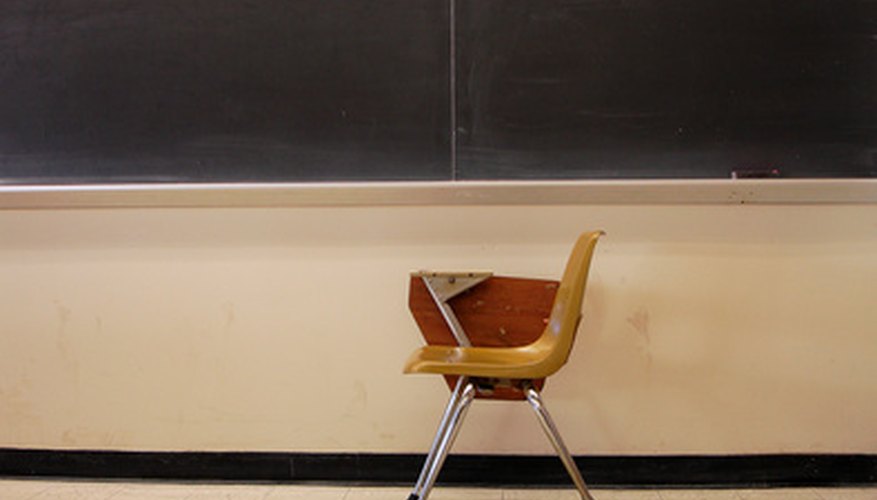Inclusive learning describes an education practice in which students with special needs are incorporated into mainstream classrooms. Also called inclusion, inclusive learning seeks to provide all students with an opportunity to access high-quality education from professionally trained teachers and aids. Though inclusion is now mandated by federal law, some groups and individuals believe inclusive learning creates difficult learning environments for students and teachers. Proponents of inclusive learning contend that desegregated classrooms lead to higher-quality education for both disabled and non-disabled students.
History
Inclusive learning was introduced the 1960s as part of a larger discussion about integration as schools began desegregating classrooms after the landmark Supreme Court ruling in Brown vs Board of Education Topeka. President Eisenhower introduced legislation that provided federal funding to train teachers of special needs students. In the 1980s, schools began independently adopting inclusion practices in classrooms, but it was not until the Disabilities Education Act in 1990 that the law mandated that all students with disabilities have access to inclusive learning environments and high-quality education outcomes. The No Child Left Behind Act of 2001 expanded upon the Disabilities Education Act to further extend rights to inclusion to students and parents of students with disabilities.
- Inclusive learning was introduced the 1960s as part of a larger discussion about integration as schools began desegregating classrooms after the landmark Supreme Court ruling in Brown vs Board of Education Topeka.
- In the 1980s, schools began independently adopting inclusion practices in classrooms, but it was not until the Disabilities Education Act in 1990 that the law mandated that all students with disabilities have access to inclusive learning environments and high-quality education outcomes.
Features
Inclusive education ensures that students with mental, physical or learning disabilities receive education in their least restrictive environment (LRE). Though individual student LREs vary by the students' individual needs, most LREs are in classrooms with non-disabled students. The majority of instruction occurs in desegregated classrooms while teachers and aids provide necessary supportive services to the disabled student. Students with disabilities are given assessments that accurately measure the students' skills; sometimes these alternative assessments are different from the general assessment given to the class. For instance, during a written spelling test, a student with disabilities may have the words read aloud to him and then recite the spelling back to the aid instead of writing the word down. Teachers, parents and specialists develop Individual Education Plans (IEPs) for each student requiring additional services. IEPs outline the student's abilities, goals and accommodations in the classroom.
- Inclusive education ensures that students with mental, physical or learning disabilities receive education in their least restrictive environment (LRE).
- Though individual student LREs vary by the students' individual needs, most LREs are in classrooms with non-disabled students.
Significance
Inclusive education is seen as a large aspect in achieving ability-based equality. Laws that support inclusion are aimed at ensuring that all students have access to high-quality education regardless of their level of ability. Proponents of inclusion believe that segregated classrooms result in inferior educational quality for students relegated to the low-ability classrooms. Inclusive learning proposes that all students are capable of learning so long as accommodations are made to their specific needs.
- Inclusive education is seen as a large aspect in achieving ability-based equality.
- Inclusive learning proposes that all students are capable of learning so long as accommodations are made to their specific needs.
Misconceptions
Opponents to inclusion believe that inclusion is too expensive for school districts--however, integrating students into mainstream classrooms reduces the need for full-time staffing positions and additional classroom space and supplies in segregated classrooms. Others believe that inclusive classrooms offer special treatment to students with disabilities--however, inclusion is based on giving all students equal access to knowledge when a disability prevents a child from learning in a traditional way. Some people worry that inclusive classrooms are disruptive to students without disabilities--however, inclusive classrooms often help non-disabled students develop empathy and positive awareness of differences without sacrificing the quality of their learning.
Benefits
Inclusive classrooms have many benefits for students with disabilities. Students with disabilities are given one-on-one instructional assistance without being isolated from other students or teachers. Students are able to develop practical social and interpersonal skills through interactions with classmates. They are exposed to a wider range of subjects, skills and knowledge in inclusive classrooms than in segregated classrooms. Teachers benefit through expanding their instructional approaches, skills and abilities through federally funded training and professional development courses.
- Inclusive classrooms have many benefits for students with disabilities.
- They are exposed to a wider range of subjects, skills and knowledge in inclusive classrooms than in segregated classrooms.
